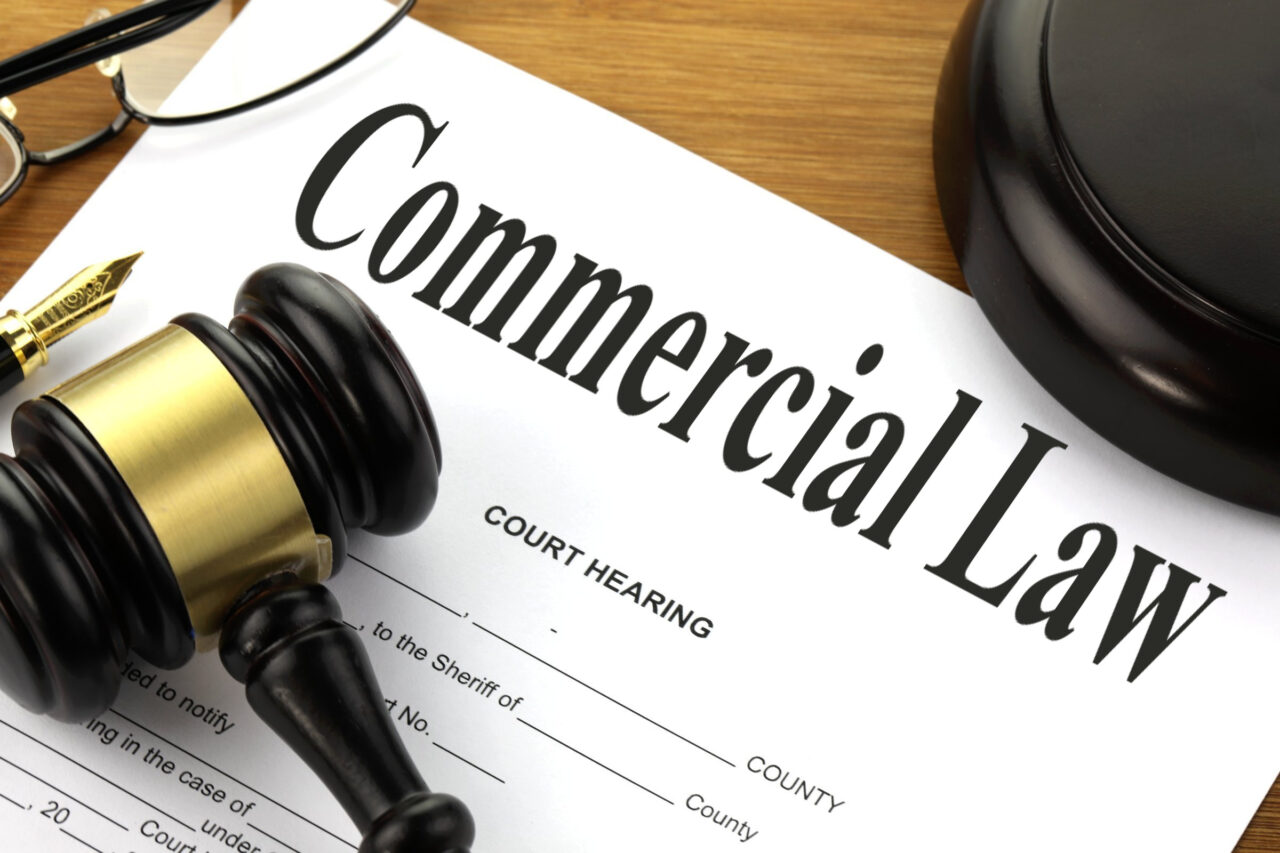In today’s global economy, intellectual property (IP) has become a valuable asset for businesses across various industries. From innovative technologies to brand identities and creative works, protecting intellectual property is crucial for maintaining a competitive edge and securing future growth.
This article explores the importance of intellectual property protection and the role of commercial law in safeguarding these valuable assets.
Understanding Intellectual Property Rights
Intellectual property refers to the legal rights granted to individuals or organizations for their creative and innovative works. It encompasses a wide range of intangible assets, including inventions, trademarks, copyrights, and trade secrets. These rights allow creators to protect their ideas and prevent others from using them without permission.
Definition and Types of Intellectual Property
Intellectual property can be categorized into different types to better understand its scope and protection. The main categories include:
- Patents: Granted to inventors for new inventions or processes with technical advancements.
- Trademarks: Protect distinctive brand names, logos, slogans, or other identifiers that distinguish products or services.
- Copyrights: Safeguard original works of authorship, such as literary, artistic, musical, or architectural creations.
- Trade Secrets: Confidential information that provides a competitive advantage, such as formulas, recipes, or customer lists.

Importance of Intellectual Property Protection
Effective intellectual property protection is vital for several reasons. Firstly, it encourages innovation and creativity by providing legal incentives for creators to invest time, effort, and resources into developing new ideas. When creators have confidence in their ability to protect their intellectual property, they are more likely to share their innovations with the world.
Secondly, intellectual property protection fosters economic growth and encourages investment in research and development. Companies are more likely to invest in new technologies and creations when they know their efforts will be rewarded. This leads to job creation, increased productivity, and overall economic progress.
Lastly, protecting intellectual property helps maintain market competition. By preventing unauthorized use or reproduction, companies can ensure a fair marketplace where innovative businesses can thrive and consumers have access to a variety of choices.
Furthermore, intellectual property rights play a crucial role in international trade. In a globalized economy, protecting intellectual property is essential for businesses to expand their operations across borders. It provides a framework for fair competition and encourages foreign investment by ensuring that companies’ valuable intellectual assets are safeguarded.
Moreover, intellectual property rights also contribute to the growth of the entertainment industry. Copyright protection allows artists, musicians, filmmakers, and authors to monetize their creative works. This, in turn, enables them to continue producing high-quality content and contributes to the cultural enrichment of society.
Additionally, intellectual property rights promote collaboration and knowledge sharing. Through licensing agreements and partnerships, creators can grant others the right to use their intellectual property in exchange for royalties or other benefits. This facilitates the transfer of technology, encourages innovation in different industries, and fosters a culture of continuous improvement.
In conclusion, understanding intellectual property rights is crucial in today’s knowledge-based economy. By recognizing and protecting the value of creative and innovative works, we can foster a climate of innovation, drive economic growth, and ensure a fair and competitive marketplace for all.
Commercial Law and Intellectual Property
Commercial law plays a crucial role in intellectual property protection. It provides the legal framework and mechanisms to secure and enforce intellectual property rights. Additionally, commercial law ensures fair competition and resolves disputes related to intellectual property infringement.
Role of Commercial Law in IP Protection
Commercial law establishes the rules and regulations governing intellectual property rights. It outlines the procedures for obtaining patents, trademarks, and copyrights, as well as the conditions for maintaining and enforcing these rights.
Moreover, commercial law plays a pivotal role in fostering innovation and creativity. By providing a secure legal environment, it encourages individuals and businesses to invest in research and development, knowing that their intellectual property will be protected. This, in turn, leads to the advancement of technology, the growth of industries, and the overall progress of society.
Furthermore, commercial law enforces contractual obligations and protects against infringements. It provides remedies and legal recourse for those whose intellectual property rights have been violated, including compensation for damages and injunctive relief to prevent further infringement.

Legal Framework for IP Protection
The legal framework for intellectual property protection varies across jurisdictions but generally includes national and international laws, treaties, and conventions. National laws provide the foundation for protection, while international agreements ensure harmonization and cooperation between countries.
For example, in the United States, the main legislation for intellectual property protection includes the Patent Act, the Copyright Act, and the Lanham Act, which governs trademarks. These laws not only grant exclusive rights to creators and inventors but also promote the dissemination of knowledge by striking a balance between the interests of the rights holders and the public.
On the international level, agreements such as the Paris Convention for the Protection of Industrial Property and the Berne Convention for the Protection of Literary and Artistic Works establish minimum standards for IP protection among member countries. These agreements facilitate global cooperation, harmonize legal principles, and provide mechanisms for resolving cross-border intellectual property disputes.
In conclusion, commercial law is an essential component of intellectual property protection. It not only establishes the legal framework for securing and enforcing intellectual property rights but also fosters innovation, ensures fair competition, and promotes the dissemination of knowledge. By upholding the principles of commercial law, societies can encourage creativity, protect the rights of creators and inventors, and drive economic growth.
Strategies for Safeguarding Intellectual Property
Developing an effective strategy is key to safeguarding intellectual property. It involves a combination of legal measures, internal policies, and proactive actions that businesses can take to protect their valuable assets.
When it comes to safeguarding intellectual property, businesses must not only focus on legal protection but also on creating a culture of awareness within their organization. This includes educating employees about the importance of intellectual property and the potential risks associated with its infringement. By fostering a sense of responsibility and vigilance, businesses can significantly reduce the chances of intellectual property theft.
Patent Protection Strategy
For inventions or technical innovations, obtaining patent protection is crucial. This process involves filing a patent application with the relevant intellectual property office, disclosing the invention’s details, and proving its novelty, non-obviousness, and industrial applicability. A granted patent provides exclusive rights for a set period, allowing the inventor to prevent others from making, using, or selling the patented invention without permission.
However, it is important to note that obtaining a patent is not a one-time solution. Businesses should regularly review their patent portfolio to ensure that it aligns with their current business objectives. This includes evaluating the commercial viability of each patent and considering whether it is worth maintaining or licensing to others.
Additionally, businesses can further protect their patent rights by conducting regular patent searches and monitoring the marketplace to identify potential infringements. If infringement is suspected, legal action can be taken to enforce patent rights and seek appropriate remedies.
Trademark Protection Strategy
For brand identities, trademarks play a crucial role in preventing confusion among consumers and protecting the reputation and goodwill associated with a business. Registering a trademark with the relevant authority provides exclusive rights to use the mark, prevents others from using confusingly similar marks, and allows for legal action if infringement occurs.
However, registering a trademark is just the beginning. Businesses should actively monitor the marketplace for unauthorized use or misuse of their trademarks. This includes conducting regular searches to identify any potential infringements and taking prompt action to address them. Vigilance and prompt action can help prevent dilution of the brand’s distinctiveness and protect its value.
Copyright Protection Strategy
Copyright protection is automatic upon creation of an original work of authorship. However, businesses can benefit from additional protection by registering copyrights with the appropriate authorities. Registering grants certain advantages, such as the ability to seek statutory damages and attorney’s fees in case of infringement.
Businesses should implement policies and procedures to ensure copyright compliance, such as obtaining licenses for third-party content and educating employees on copyright laws. Regular audits and monitoring can help identify and address potential infringements promptly.
Furthermore, businesses should also consider the importance of international copyright protection. With the rise of digital content and global markets, protecting intellectual property across borders has become increasingly crucial. This may involve registering copyrights in multiple jurisdictions or leveraging international agreements and treaties to safeguard intellectual property rights.
In conclusion, safeguarding intellectual property requires a comprehensive approach that combines legal measures, internal policies, and proactive actions. By developing a robust strategy and fostering a culture of awareness, businesses can protect their valuable assets and maintain a competitive edge in today’s knowledge-driven economy.
Navigating Intellectual Property Disputes
Despite proactive measures, intellectual property disputes can still arise. These disputes can be complex and require careful navigation to protect and enforce intellectual property rights.
Common IP Disputes and Their Resolution
Intellectual property disputes can involve various issues, such as infringement, misappropriation, counterfeiting, or breach of contractual obligations. To resolve these disputes, businesses can pursue negotiation, mediation, arbitration, or litigation, depending on the nature and complexity of the case.
Alternative dispute resolution methods, such as negotiation and mediation, offer more flexibility and potentially quicker resolutions. However, if these methods fail or the infringement is severe, litigation may be necessary to enforce intellectual property rights and seek appropriate remedies.
Role of Legal Counsel in IP Disputes
Engaging legal counsel experienced in intellectual property law is essential when navigating disputes. Intellectual property attorneys can provide expert advice on the strength of your case, the available legal remedies, and the potential strategies for resolution.
Their knowledge and understanding of the legal framework and precedents can help businesses protect their intellectual property rights effectively. Additionally, legal counsel can assist in preparing and filing necessary legal documents, representing the business in negotiations or court proceedings, and securing the best possible outcome.
Future of Intellectual Property Protection
The landscape of intellectual property protection continues to evolve as technology advances and global markets become more interconnected. Staying informed about emerging trends is crucial for businesses seeking to safeguard their intellectual property assets.
Emerging Trends in IP Protection
New challenges and opportunities are arising in the field of intellectual property protection. With the rapid expansion of digital technologies, issues such as online piracy, cybersquatting, and the protection of digital content gain prominence. Governments and international organizations are working to address these challenges through enhanced regulations and cooperation.
Additionally, developments in artificial intelligence, blockchain, and 3D printing pose new challenges for IP protection. Adaptation to these technologies requires innovative approaches to secure intellectual property rights effectively.
Impact of Technology on IP Protection
Technology not only presents challenges but also offers solutions for intellectual property protection. For instance, digital watermarking and encryption techniques can aid in detecting and preventing unauthorized use or distribution of copyrighted materials. Blockchain technology holds the potential to create secure and transparent systems for verifying ownership and origin of digital assets.
As technology continues to evolve, it is important for businesses and policymakers to collaborate to develop effective strategies and regulations that balance innovation, access to knowledge, and the protection of intellectual property rights.In conclusion, intellectual property protection plays a crucial role in safeguarding valuable assets for businesses. Commercial law provides the framework and mechanisms to secure and enforce intellectual property rights. By implementing effective strategies and staying informed about emerging trends, businesses can navigate intellectual property disputes and ensure the future protection of their intellectual property assets.
Other resources:
Choosing the Right Conveyancer: Factors to Consider When Hiring Legal Support

